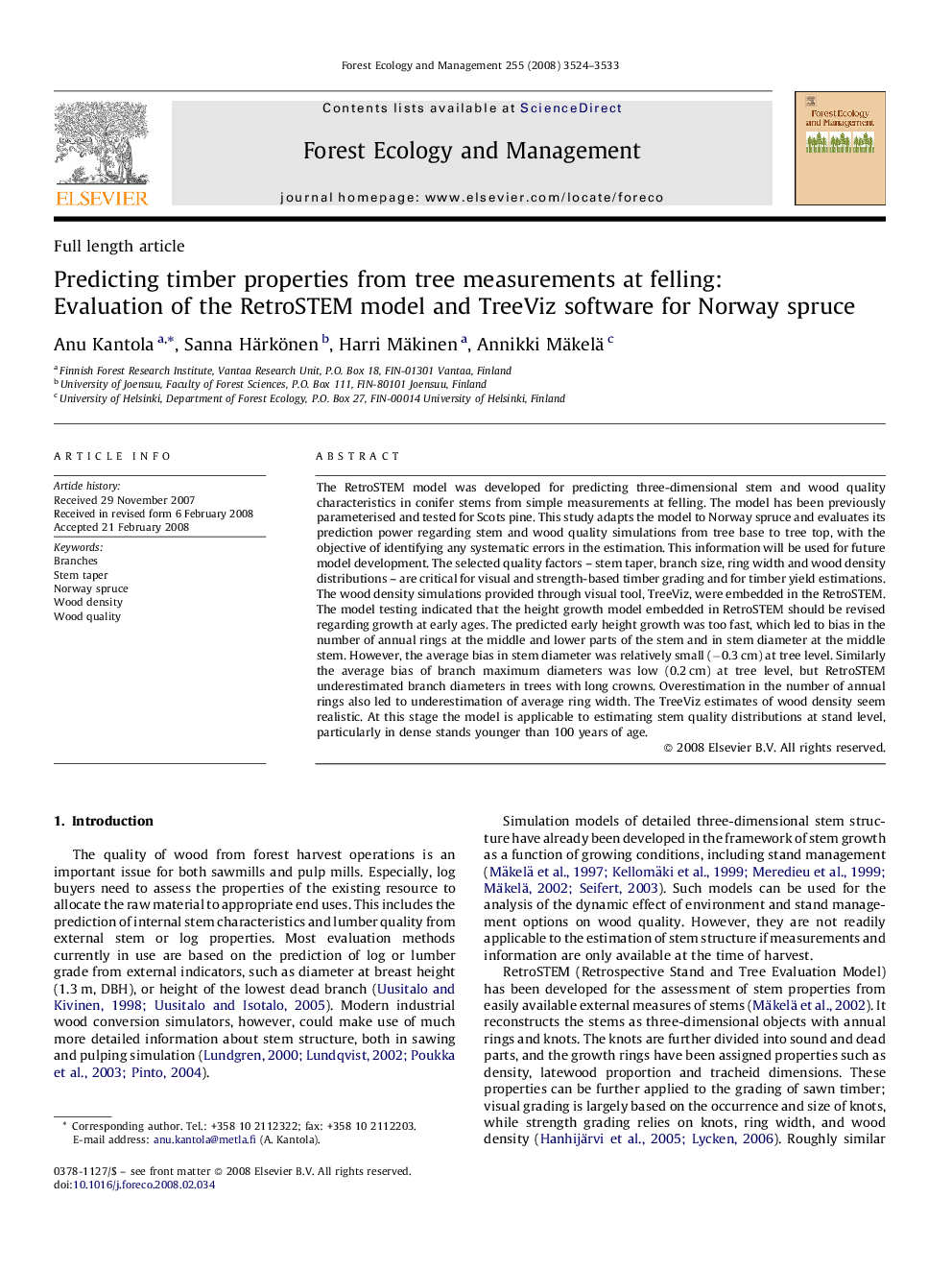| کد مقاله | کد نشریه | سال انتشار | مقاله انگلیسی | نسخه تمام متن |
|---|---|---|---|---|
| 89232 | 159335 | 2008 | 10 صفحه PDF | دانلود رایگان |

The RetroSTEM model was developed for predicting three-dimensional stem and wood quality characteristics in conifer stems from simple measurements at felling. The model has been previously parameterised and tested for Scots pine. This study adapts the model to Norway spruce and evaluates its prediction power regarding stem and wood quality simulations from tree base to tree top, with the objective of identifying any systematic errors in the estimation. This information will be used for future model development. The selected quality factors – stem taper, branch size, ring width and wood density distributions – are critical for visual and strength-based timber grading and for timber yield estimations. The wood density simulations provided through visual tool, TreeViz, were embedded in the RetroSTEM. The model testing indicated that the height growth model embedded in RetroSTEM should be revised regarding growth at early ages. The predicted early height growth was too fast, which led to bias in the number of annual rings at the middle and lower parts of the stem and in stem diameter at the middle stem. However, the average bias in stem diameter was relatively small (−0.3 cm) at tree level. Similarly the average bias of branch maximum diameters was low (0.2 cm) at tree level, but RetroSTEM underestimated branch diameters in trees with long crowns. Overestimation in the number of annual rings also led to underestimation of average ring width. The TreeViz estimates of wood density seem realistic. At this stage the model is applicable to estimating stem quality distributions at stand level, particularly in dense stands younger than 100 years of age.
Journal: Forest Ecology and Management - Volume 255, Issues 8–9, 15 May 2008, Pages 3524–3533